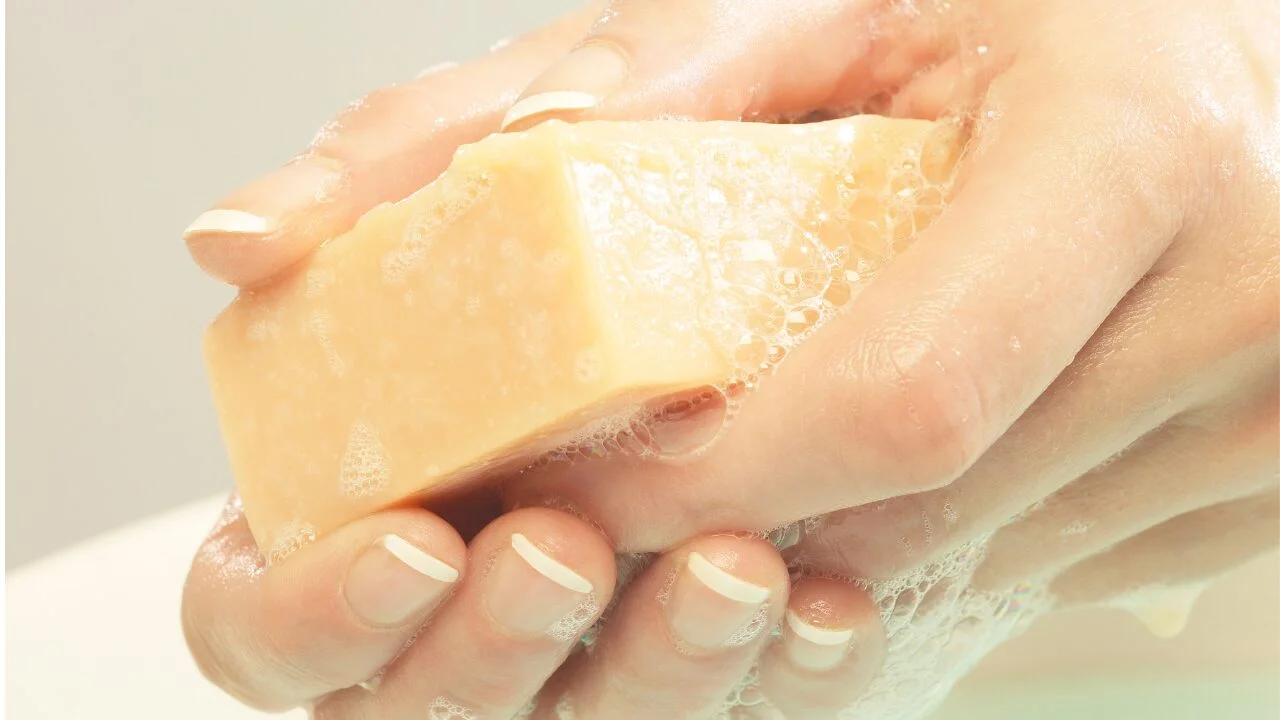Last Updated on January 19, 2025
Table of Contents
Why Choose Natural Dish Soaps?
When cleaning your dishes, the products you use play a more significant role than you might imagine—not just for your health but for the planet. Let’s dive into why switching to natural dish soap is a choice that benefits everyone. Why Choose Natural Dish Soaps? Imagine a world where washing your dishes contributes to a cleaner home and a healthier planet. Natural dish soaps offer this dual benefit by eliminating harmful chemicals and embracing eco-friendly practices. Conventional dish soaps often contain harsh chemicals like phosphates, triclosan, and synthetic fragrances that may leave toxic residues, irritate your skin, and contribute to water pollution.
Switching to natural dish soaps means choosing biodegradable, non-toxic, and plant-based solutions that break down easily in the environment. These products protect aquatic ecosystems and reduce your carbon footprint while being gentle on your hands. A Real-Life Perspective: Picture this: You’re cleaning up after a hearty meal, and instead of worrying about exposing your family to chemical residues, you’re confident in a product that’s kind to your health and the planet. That’s the promise of natural dish soaps.
What Makes a Dish Soap Eco-Friendly? Not all “natural” products are created equal. Let’s break down the essential factors that make a dish soap eco-friendly: Plant-Based Ingredients: Look for formulations free of sulfates and parabens. These soaps often rely on coconut oil, citrus extracts, or aloe vera for their cleaning power. Recyclable Packaging: Eco-friendly dish soaps frequently come in recyclable or refillable containers, reducing plastic waste. Cruelty-Free and Vegan Certifications: Many natural dish soaps are not tested on animals and use ingredients free of animal byproducts.
Biodegradability: A key marker of eco-friendliness is how quickly the soap breaks down in the environment, leaving no toxic traces. A Personal Connection I remember the first time I swapped my regular dish soap for a natural one. Initially, I was skeptical—would it cut through grease just as well? But after a week of using a soap with plant-based ingredients and a refreshing citrus scent, I was convinced. My hands were less dry, my dishes were spotless, and I had the satisfaction of knowing I wasn’t harming the planet.
Evaluation Criteria
Hello, eco-warriors! It’s Barbara here, and today, we’re diving into the nitty-gritty of evaluating natural dish soaps. If you’re like me, you care about products that don’t just get the job done but also align with our planet-friendly values. When testing and comparing dish soaps, it’s essential to focus on measurable, practical factors that reflect what truly matters in your daily life. Let’s break down the criteria we’ll use to ensure our findings are both fair and helpful.
Cleaning Power: The Real MVP
Let’s face it—nothing else matters if dish soap doesn’t clean effectively. Cleaning power is the heart of our evaluation. For this, I’ll test each soap on dishes with identical, everyday messes: greasy pans, baked-on casserole dishes, and plates smeared with sticky sauces. Using the same types of stains has a fair playing field to judge how well each soap tackles tough grime.
Why This Matters:
Grease and residue can be stubborn, and not all natural soaps are created equal. A soap that performs well here earns its place in your kitchen.
What I’ll Look For:
- Did it cut through the grease in one wash?
- How much soap did I need to use to achieve sparkling results?
Residue: Nobody Wants a Soapy Film
A great dish soap shouldn’t leave you second-guessing whether your dishes are clean. After rinsing, I’ll closely inspect the dishes under natural light to check for any soap residue. We’re aiming for a squeaky-clean finish here.
Why This Matters:
Residue can impact the taste of food and drinks (hello, soapy coffee!) and make glassware look dull. A good soap rinses away completely, leaving nothing but shine.
Scent: A Breath of Fresh (Natural) Air
One of the joys of using natural products is enjoying scents derived from essential oils and botanical extracts. I’ll evaluate each soap’s fragrance, considering its appeal, strength, and longevity. Overpowering or synthetic-like scents will lose points here.
Why This Matters:
We use dish soap multiple times daily, so the scent shouldn’t be headache-inducing or clash with other kitchen smells. Bonus points for light, refreshing fragrances that linger just enough to make the experience enjoyable.
Cost Per Use: Budget-Friendly Sustainability
Being eco-conscious shouldn’t break the bank. For this criterion, I’ll calculate the cost per use by dividing the price by the average number of washes I get from each soap.
Why This Matters:
Sustainability is also about affordability. If a soap is too expensive, it’s not a realistic option for most households. This metric ensures we’re balancing eco-friendliness with practicality.
Eco-Certifications: Backing Up the Claims
Not all natural soaps live up to their green marketing. I’ll verify each soap’s sustainability claims by checking for reputable certifications like USDA Organic, Leaping Bunny (cruelty-free), or the Rainforest Alliance.
Why This Matters:
Certifications give us confidence that a product truly aligns with our values. They show the company is willing to go the extra mile to meet high standards for environmental impact, ingredient sourcing, and ethical practices.
Experiment Setup
Materials Needed:
To ensure accurate and consistent results, gather the following materials:
- Five natural dish soaps: Select reputable, eco-friendly brands with clear ingredient lists and environmental certifications. Examples include Seventh Generation, Dr. Bronner’s, and Ecover.
- Identical sets of dishes: Use dishes with similar grease and stain levels, such as plates or pans used to cook the same meal.
- Standardized sponges or brushes: Ensure all washing tools are the same type and brand to avoid variability in cleaning performance.
- Measuring tools: Use a teaspoon or pump dispenser to apply the same amount of soap for each test.
- Timer: To standardize washing time across tests.
- Notebook or digital tool: Record observations and results for each soap.
Testing Process:
- Prepare the dishes:
- Use identical dishes and create similar grease or food residue by cooking the same oily or sticky meal on each plate. For example, fry eggs or cook pasta with olive oil for consistent stains.
- Allow the stains to sit for a similar amount of time before cleaning to mimic real-life scenarios.
- Apply the dish soap:
- Measure and apply an equal amount of soap to each dish. For liquid soaps, use a teaspoon or one pump; for concentrated bars, rub the sponge or brush on the soap for a set time (e.g., 10 seconds).
- Place each dish in identical cleaning conditions (e.g., same sink or water basin).
- Standardize the washing method:
- Use a consistent approach for each dish, such as 20 scrubs with the sponge under lukewarm water.
- Ensure the same pressure is applied during scrubbing to avoid bias in cleaning power.
- Record observations:
- After cleaning, note the following for each soap:
- Cleaning effectiveness: Were all grease and residue removed?
- Residue or streaks: Did the soap leave behind any film or streaks?
- Ease of use: Was the soap easy to lather or spread?
- Scent: Was the fragrance pleasant or overpowering?
- Eco-friendliness: Review the packaging and ingredient list for sustainability indicators.
- Take side-by-side photos of dishes before and after cleaning for a visual comparison.
- After cleaning, note the following for each soap:
Results and Analysis
Data Comparison:
- Grease removal: Rank each soap from most effective to least effective based on how well it cleaned the dishes.
- Residue left behind: Compare dishes for streaks or leftover residue.
- Ease of use: Note how easy it was to lather or work with each soap.
- Scent: Rank the fragrances based on user preference or absence of pungent chemical smells.
- Cost-effectiveness: Calculate the cost per wash by dividing the soap price by estimated uses.

Barbara is an environmental activist and sustainability advocate who loves living green and sustainable. She firmly believes in reducing her carbon footprint and has been making great strides towards achieving this goal. Barbara is a vegan and avid recycler and has been actively involved in community gardens and other green initiatives. She is passionate about spreading awareness about the importance of living in a sustainable and eco-friendly manner. Barbara is always looking for ways to make a difference in her community and beyond. She is a huge advocate for preserving nature and the planet for future generations.

